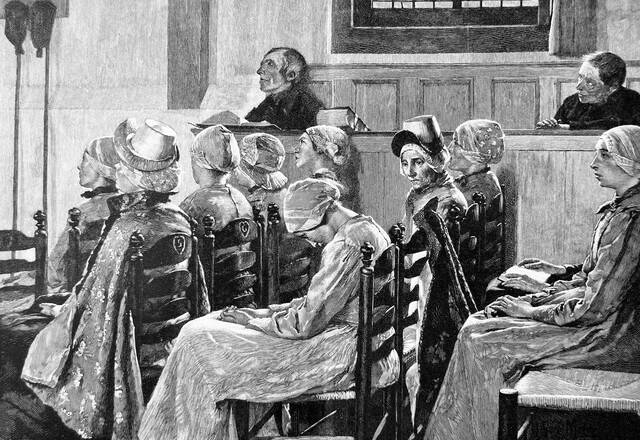U.S. Economic Policy - An Overview
The economic policies of the United States are driven and influenced by a wide variety of factors: laws, the Constitution, lobbyists, the global economic climate, and, ultimately, the will of the people. We will examine the process of drafting one of the most closely watched economic policies in the world, the U.S. Federal Budget. The process to create this budget is repeated yearly and it offers a close look at the balance of power between the Executive (President) and Legislative (Congress) branches of our federal government.
The Congressional Budget Act of 1974 outlines the procedures and regulations that Congress must follow in order to pass tax legislation and spending policies. One of the most fundamental requirements of the Act is that Congress must develop a budget resolution each year that sets limits on spending and forecasts federal revenue. These limits on spending apply to all legislation passed, including any and all amendments which Congress may propose.
The President's Budget
In the economic policy-making process, many initiatives start with the President, and the Federal Budget is no exception. On the first Monday in February, the President will submit to Congress a detailed budget for the upcoming fiscal year. The U.S. fiscal year begins on the following October 1st. The President's budget will be drafted by the Office of Management and Budget (OMB), and it will outline three important economic policies:
Overall Fiscal Policy
There are three main guidelines in the President's overall fiscal policy. The President will propose to Congress how much the federal government can spend for public purposes, how much it should receive in tax payments from the public, and how much of a difference there will be between the amount it spends and the amount it receives. This difference will either be positive (a surplus) or negative (a deficit).
Priorities for Federal Programs
The president will specify his or her guidelines on how much should be spent on various types of governmental departments like defense, education, agriculture, health, and others. The budget will include specific amounts for programs within each department. In addition to specifying the spending guidelines for the upcoming Fiscal Year, the President's budget may include amounts for the following five years so that lawmakers are aware of the general direction of his or her economic policies.
Changes
Lastly, the President's budget will notify Congress of any proposed changes in the tax and spending policies of the federal government. Most of the spending done by the government is dictated by existing federal laws and is spent automatically, so there is very little that can be changed by the President. But, he or she does have to ask for several specific types of funding, discretionary spending, changes to entitlement and to social welfare programs such as Social Security, and changes to the tax code. We will take a close look at discretionary spending since it often involves heated debate among lawmakers.
Discretionary Spending
Discretionary programs are government initiatives that must have their funding renewed each year. Federal funds are not spent automatically on these programs, as they are for such programs as Social Security and Medicare. Discretionary programs are optional programs that the President deems important for the economic climate of the United States.
Most of the defense spending, while essential in many respects, is actually discretionary spending. There are countless programs within the defense budget and each of them must be renewed each year as Congress evaluates the necessity of keeping them funded. In addition to defense spending, other examples of discretionary funding are education, health, and many programs within the Department of Transportation.
As we discussed in the section on how policies and laws are made, the amount and types of discretionary spending each year must go through a detailed process that gives both the House of Representatives and the Senate an opportunity to review the economic policies contained within the Federal Budget. More specifically, there are two committees that hold an enormous amount of power in determining the fate of all discretionary spending, The House Appropriations Committee and the Senate Appropriations Committee. A position on one of these committees is often regarded as one of the most prestigious positions in the federal government.
All discretionary spending must be evaluated and approved by the House Appropriations Committee and the members who sit on this committee may not hold any other committee position within the government, a provision that underscores the importance of the committee's decisions. All approved discretionary spending programs are advanced to the Senate and assigned to the Senate Appropriations Committee for further review.
The Congressional Budget Resolution
When Congress receives the President's budget, it will draft a budget resolution, which is done by the House and Senate Budget Committees. The resolution is sent to the House and Senate for its full vote and the Federal Budget, which is due by April 15th, will pass with a majority vote in both houses of Congress.
The budget resolution is much more concise than that of the President's original budget request. It will contain summaries on each of the 19 major departments, or categories, of federal spending. It must report on how much revenue will be collected and how much will be spent on each category. The Congressional Budget Resolution is then submitted to Congress for a vote. The Congressional Budget Act of 1974 requires that the resolution contain at least five years worth of information although it often contains more for programs that are closely watched by lawmakers.
The Budget Reconciliation Process
During the debate on the Federal Budget, Congress may propose bills called a reconciliation bill, which is proposed legislation that affects the Federal Budget. The Budget Committee in each House will bundle all such reconciliation bills together into one bill, which is then submitted to the floors of both Houses for a full vote.
Pay As You Go Rule
The Pay As You Go rule (PAYGO) is a law that mandates that all increases in spending on entitlement and social welfare programs such as Social Security and Medicare must be offset (or paid for) by increased taxes or reductions in other spending. This rule only applies to entitlement programs and not to discretionary programs. If any increase in entitlement programs is proposed without an offset, a member of the House may raise a point of order, which automatically defeats the bill. If a point of order is raised by a Senator, the bill can be saved if 60 Senators vote in favor of it.
Congressional Approval After all the committees have done their work and the reconciliation bills have been incorporated into the budget proposal, the Congress will vote on the Federal Budget and it will thus outline the economic policy and priorities of the United States.










